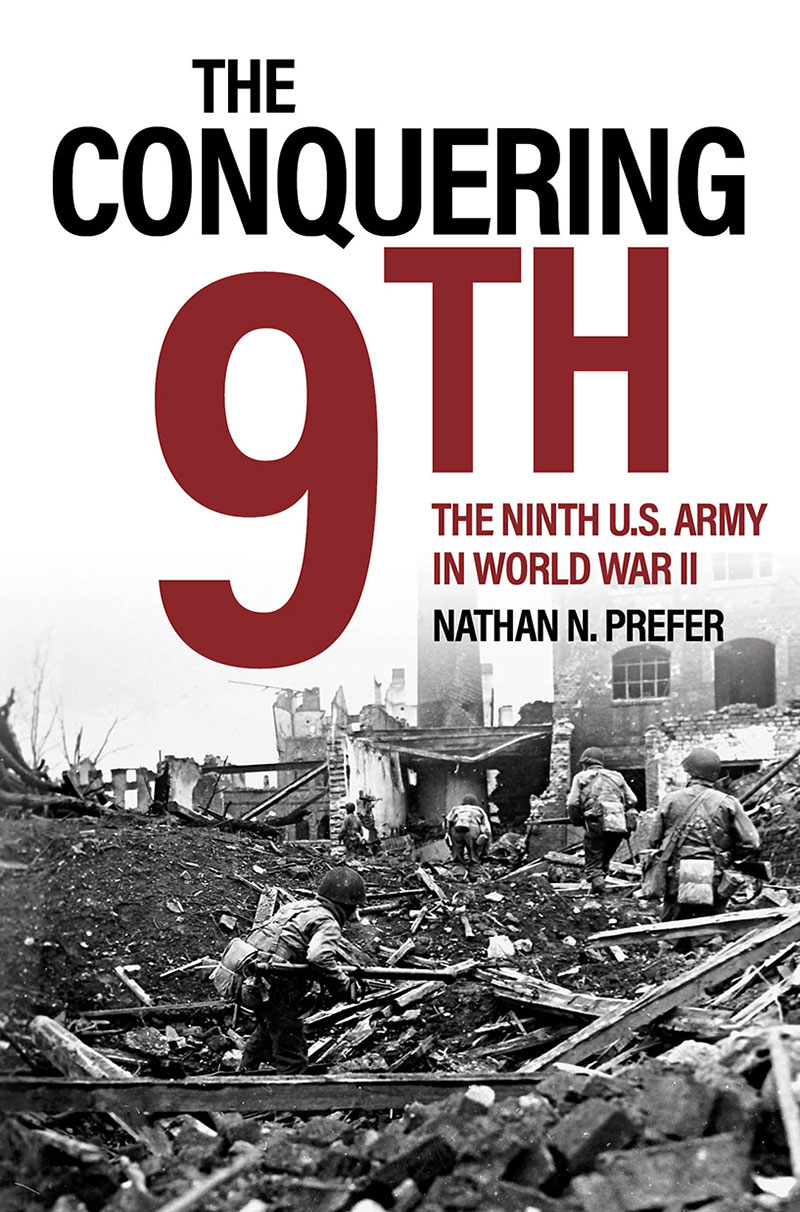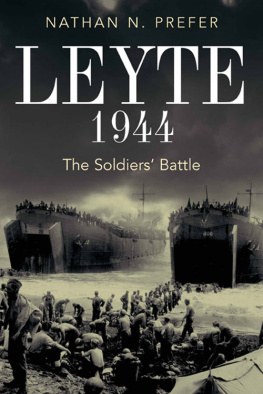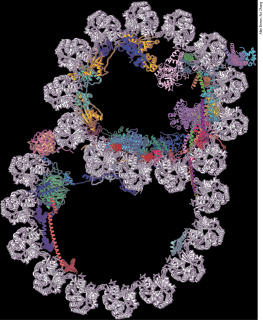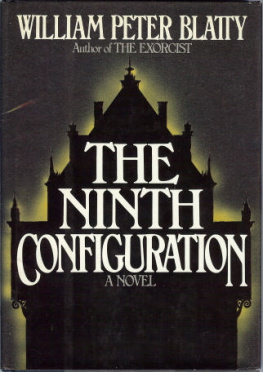Nathan N. Prefer - The Conquering Ninth: The Ninth U.S. Army in World War II
Here you can read online Nathan N. Prefer - The Conquering Ninth: The Ninth U.S. Army in World War II full text of the book (entire story) in english for free. Download pdf and epub, get meaning, cover and reviews about this ebook. year: 2020, publisher: Casemate Publishers, genre: History. Description of the work, (preface) as well as reviews are available. Best literature library LitArk.com created for fans of good reading and offers a wide selection of genres:
Romance novel
Science fiction
Adventure
Detective
Science
History
Home and family
Prose
Art
Politics
Computer
Non-fiction
Religion
Business
Children
Humor
Choose a favorite category and find really read worthwhile books. Enjoy immersion in the world of imagination, feel the emotions of the characters or learn something new for yourself, make an fascinating discovery.

- Book:The Conquering Ninth: The Ninth U.S. Army in World War II
- Author:
- Publisher:Casemate Publishers
- Genre:
- Year:2020
- Rating:3 / 5
- Favourites:Add to favourites
- Your mark:
- 60
- 1
- 2
- 3
- 4
- 5
The Conquering Ninth: The Ninth U.S. Army in World War II: summary, description and annotation
We offer to read an annotation, description, summary or preface (depends on what the author of the book "The Conquering Ninth: The Ninth U.S. Army in World War II" wrote himself). If you haven't found the necessary information about the book — write in the comments, we will try to find it.
The Conquering Ninth: The Ninth U.S. Army in World War II — read online for free the complete book (whole text) full work
Below is the text of the book, divided by pages. System saving the place of the last page read, allows you to conveniently read the book "The Conquering Ninth: The Ninth U.S. Army in World War II" online for free, without having to search again every time where you left off. Put a bookmark, and you can go to the page where you finished reading at any time.
Font size:
Interval:
Bookmark:

THE CONQUERING NINTH
The Ninth U.S. Army in World War II
NATHAN N. PREFER

Published in the United States of America and Great Britain in 2020 by CASEMATE PUBLISHERS
1950 Lawrence Road, Havertown, PA 19083, USA
and
The Old Music Hall, 106108 Cowley Road, Oxford OX4 1JE, UK
Copyright 2020 Nathan N. Prefer
Hardback Edition: ISBN 978-1-61200-828-8
Digital Edition: ISBN 978-1-61200-829-5
Kindle Edition: ISBN 978-1-61200-829-5
A CIP record for this book is available from the British Library
All rights reserved. No part of this book may be reproduced or transmitted in any form or by any means, electronic or mechanical including photocopying, recording or by any information storage and retrieval system, without permission from the publisher in writing.
For a complete list of Casemate titles, please contact:
CASEMATE PUBLISHERS (US)
Telephone (610) 853-9131
Fax (610) 853-9146
Email: casemate@casematepublishers.com
www.casematepublishers.com
CASEMATE PUBLISHERS (UK)
Telephone (01865) 241249
Email: casemate-uk@casematepublishers.co.uk
www.casematepublishers.co.uk
There is a soul to an army as well as to the individual man, and no general can accomplish the full work of his army unless he commands the soul of his men as well as their bodies and legs.
William T. Sherman: Memoirs, 1875
The qualities which commonly make an army formidable are long habits of regularity, great exactness of discipline, and great confidence in the commander.
Samuel Johnson, 17091784
A Crackerjack Army
Remark made by General Omar N. Bradley describing the Ninth U.S. Army, as recorded in the diary of his senior aide, Major Chester (Chet) Hanson, MHRC
Appendices
Situation North of Aachen When Ninth Army Took Command
Operation Clipper
Ninth Army Defensive Situation During the Ardennes Offensive
Operation Grenade
Enemy Defenses on the Roer River in the 102nd Infantry
Division Zone
Eliminating the Wesel Pocket
The Reduction of the Ruhr Pocket
Counterattack on the Elbe
They have been called the Greatest Generation. Books have been written about their lives and the way they changed the world we now live in but, as always, there is much left overlooked and uncovered. This book tells one of those many stories which has yet to be presented to students of that era. It covers the period 19441945 and relates the achievements of the Ninth U.S. Army, one of five armies which participated in the Northwest European campaign.
Much has been written of the American participation in that campaign. But concentration has remained on the more flamboyant leaders and their armies, such as Lieutenant General George S. Pattons Third U.S. Army, or the First U.S. Army, which was first ashore and which carried a major share of that campaign. But the others, the Seventh U.S. Army under Lieutenant General Alexander (Sandy) Patch and the Ninth U.S. Army under Lieutenant General William H. Simpson, are often neglected or mentioned in passing. These armies, and the latter arriving Fifteenth U.S. Army under Lieutenant General Leonard Gerow, made major contributions to the victory of the Greatest Generation in this campaign.
The purpose of this book is to bring to light the workings of an American field army in World War II, how it operated, what it accomplished and where it stood in the hierarchy of the American military organization of the period. Field armies are often overlooked in the history of the war, seen as headquarters sinecure for high-ranking officers to collect their pay and add to their medals, preparing for post-war billets. This story also tells of the importance of personalities in the way the war was conducted in Western Europe in 19441945.
But most importantly it tells the tale of the soldiers who fought the war, often without newspaper headlines to cheer the folks at home, in battles that never made headlines. It tells of the choices, compromises, and judgements made by the senior commanders, often based on needs other than purely military.
There has been no published history of the Ninth U.S. Army since immediately after the war, when the Army itself published a history of its own, largely facts, figures, dates, and places. But for eight months the Ninth U.S. Army fought its way across Western Europe alongside better-known commands, accomplishing important victories, and becoming a vital link in inter-allied cooperation and success. For nearly half of that time, it was under the command of Field Marshal Bernard L. Montgomerys Twenty-First Army Group, the only American Army to serve under foreign command for so long a period. Given the well-known inter-allied bickering during these campaigns, it is a tribute to the Ninth U.S. Army, and particularly its commander, General Simpson, that this unusual arrangement worked so well for so long. Yet by its very attachment to a foreign command, little has been related about that army. It is past time for its story to be told.
As with any literary work, no author stands alone. There are many whose contributions to this book need to be mentioned, but space and time for only a few. Chief among these are my publisher, Ruth Sheppard, and her staff at Casemate Publishers, including the hard-working editors Isobel Fulton, David Smith, and Felicity Goldsack. These individuals encouraged and worked with me to produce the first modern history of a remarkable military command with energy and dedication that is much appreciated.
Equally important are Jo Ellen Chizmar and her staff at Real War Photos who not only produced many of the photos included in this book but had to do it twice through no fault of their own. This they did with a grace and charm that deserves gratitude. Similarly, the staff at the National Archives and Records Administration at College Park, Maryland, with their untiring dedication and knowledgeable expertise were of immense assistance throughout the process of research and illustration. Nevertheless, any errors remain mine alone.
Finally, without the encouragement, assistance and critiques of my wife, Barbara Ann, the history of this all but forgotten army would have never seen the light of day. And to my mother, Jeannette Florence, herself a member of the Greatest Generation, who also served without recognition, eternal gratitude is given.
This book is respectfully dedicated to all those who have worn the uniform, past, present and future.
The United States Army is often described as being unprepared for its role in World War II. In part this is because, until the appointment of General George C. Marshall to the post of Chief of Staff of the United States Army in 1939, much of the planning and preparation had been based on the unwarranted assumption that this new war would be much like the previous one. The American Army had acquitted itself well during that earlier conflict, and with some changes to absorb modern weapons and techniques it was felt in some quarters that it would do so again with little organizational change.
Between 1939 and 1941, the Army made a series of these organizational changes, intended to better prepare it for the coming conflict. Along with his chief staff officers (Brigadier General Harry J. Malony, Deputy Chief of Staff, and Brigadier General Mark W. Clark, Operations Officer), Lieutenant General Lesley J. McNair developed what would become the organizational structure of the United States Army in World War II. Nothing was exempt from the review or immune to potentially significant changes in organization, tasks, and armament. Not all the changes were for the better, however. Some, such as the Specialized Field Army and Corps, were eventually discarded in favor of more generalized types of ground forces.
Next pageFont size:
Interval:
Bookmark:
Similar books «The Conquering Ninth: The Ninth U.S. Army in World War II»
Look at similar books to The Conquering Ninth: The Ninth U.S. Army in World War II. We have selected literature similar in name and meaning in the hope of providing readers with more options to find new, interesting, not yet read works.
Discussion, reviews of the book The Conquering Ninth: The Ninth U.S. Army in World War II and just readers' own opinions. Leave your comments, write what you think about the work, its meaning or the main characters. Specify what exactly you liked and what you didn't like, and why you think so.






